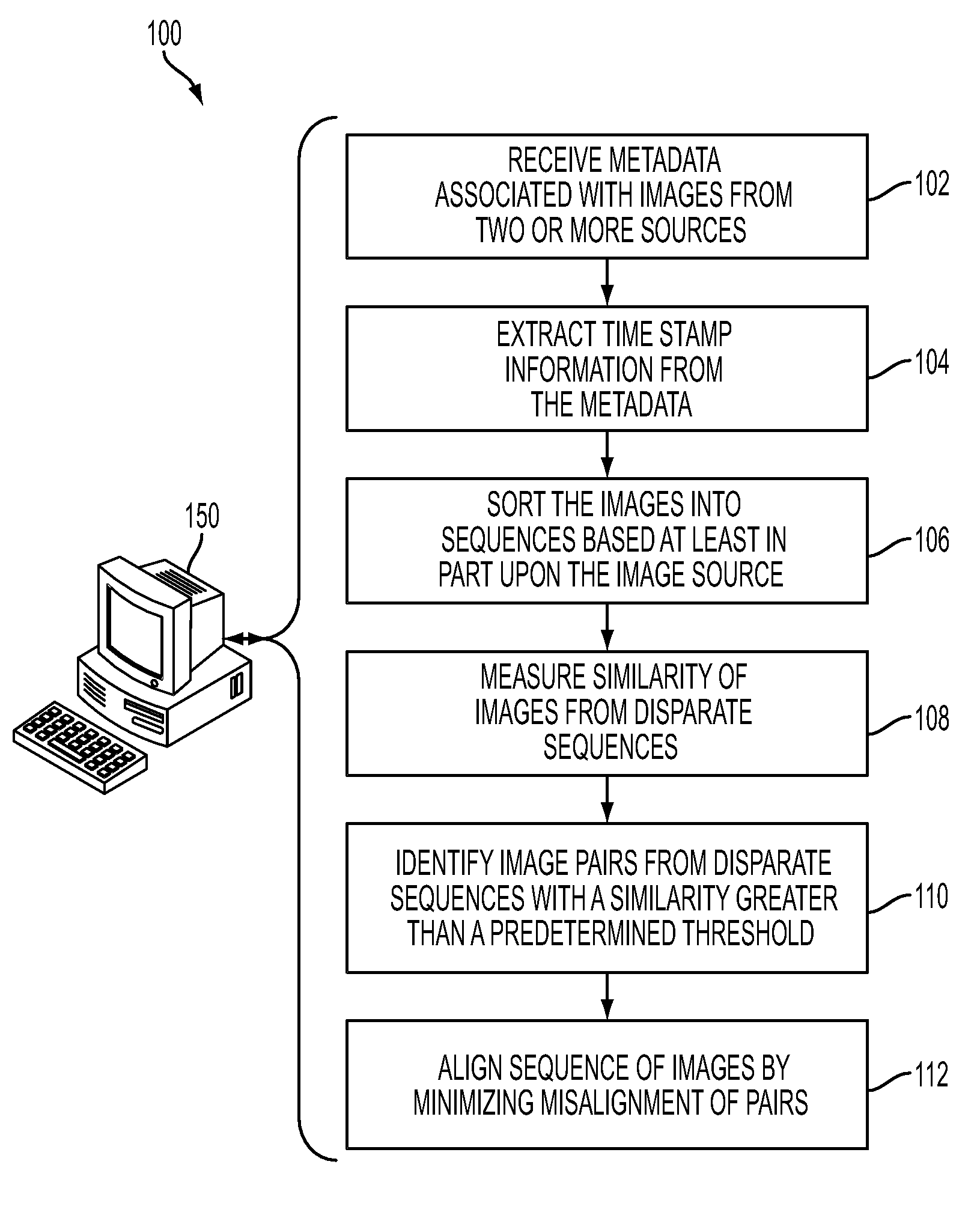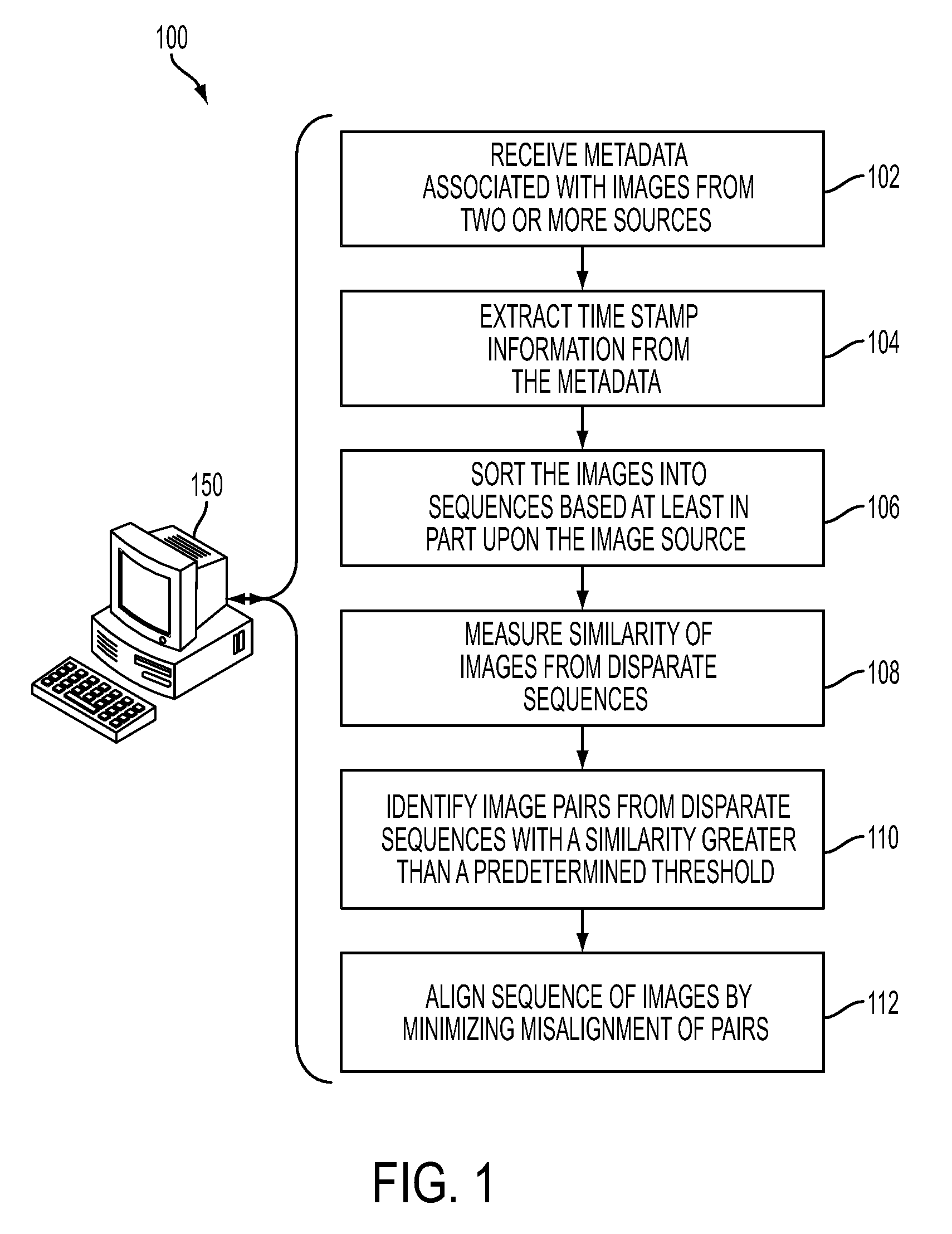Synchronizing image sequences
a sequence and image technology, applied in the field of synchronizing images, can solve the problems of exacerbated problems, relying on external settings that can be inaccurate, and difficult to organize captured images in a proper sequence, and achieve the effect of maximizing the global concentration of clusters
- Summary
- Abstract
- Description
- Claims
- Application Information
AI Technical Summary
Benefits of technology
Problems solved by technology
Method used
Image
Examples
Embodiment Construction
[0016]In describing the various embodiments of the control system, like elements of each embodiment are described through the use of the same or similar reference numbers.
[0017]As discussed herein, it is to be understood that the content of the images is utilized to align N number sequences of images taken by N different images capturing devices (e.g. cameras). One assumption is that similar pictures are taken by different cameras at approximately the same time. Such an assumption is more likely to be true when the number of cameras involved in the event and the number of photos taken increases. In this manner, an appropriate sequence of images can be ascertained and presented to a user utilizing an appropriate cost function or other objective function based on the similarity of such images.
[0018]FIG. 1 illustrates a methodology 100 that is employed to align a sequence of images. At reference numeral 102, metadata is received that is associated with images from two or more sources. ...
PUM
 Login to View More
Login to View More Abstract
Description
Claims
Application Information
 Login to View More
Login to View More - R&D
- Intellectual Property
- Life Sciences
- Materials
- Tech Scout
- Unparalleled Data Quality
- Higher Quality Content
- 60% Fewer Hallucinations
Browse by: Latest US Patents, China's latest patents, Technical Efficacy Thesaurus, Application Domain, Technology Topic, Popular Technical Reports.
© 2025 PatSnap. All rights reserved.Legal|Privacy policy|Modern Slavery Act Transparency Statement|Sitemap|About US| Contact US: help@patsnap.com



